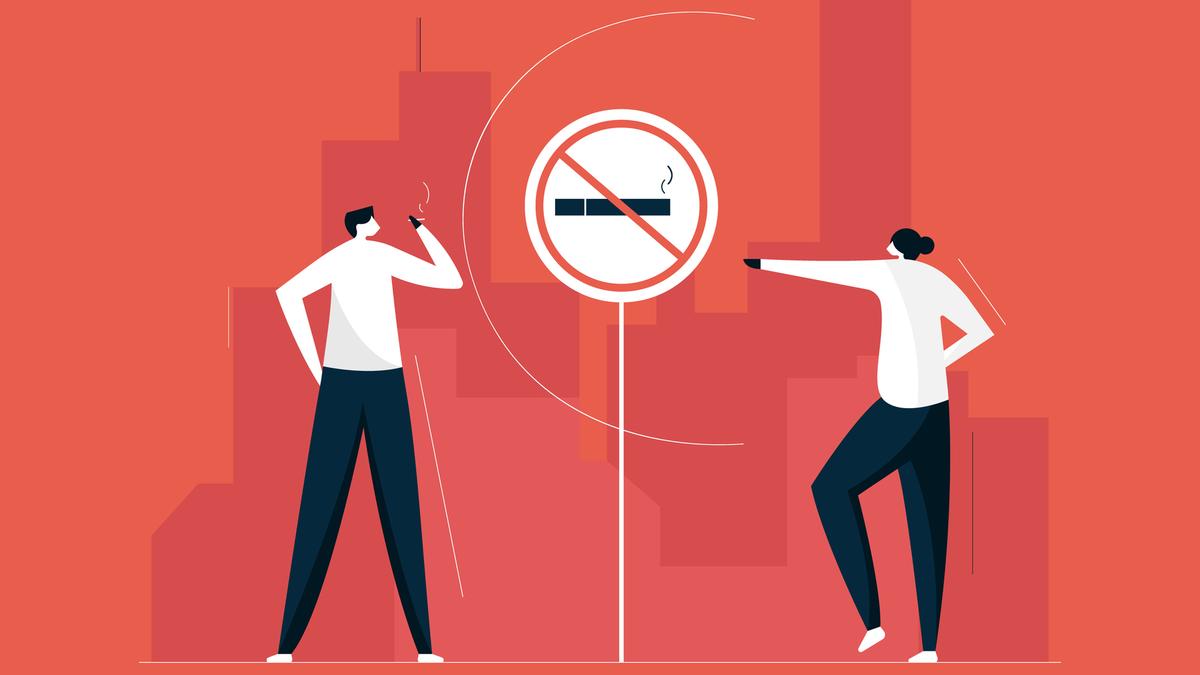
The tobacco epidemic in India
The Hindu
Tobacco's impact in India: health risks, economic burden, regulatory challenges, and the need for stronger tobacco control measures.
Tobacco is the most widely recognised preventable cause of disease and death in the world. It causes a wide range of diseases and affects those consuming it as well as those cultivating it. After China, India has the world’s highest number of tobacco consumers — nearly 26 crore, according to an estimate in 2016-2017. Additionally, the health of more than 60 lakh people employed in the tobacco industry is also placed at risk because of the absorption of tobacco through the skin, which can cause various diseases.
Tobacco’s deleterious influence extends beyond human health. It is a highly erosive crop that rapidly depletes soil nutrients. This requires more fertilizers to be used which further worsens soil quality. The plant is also a major contributor to deforestation. Up to 5.4 kg of wood is required to process 1 kg of tobacco. The production and consumption of tobacco generates nearly 1.7 lakh tonnes of waste every year in India. Therefore, tobacco production and use impose a heavy economic burden on India. A 2021 study estimated that the country incurred a loss exceeding ₹1.7 lakh crore as a result of tobacco’s effects on the health of its consumers in the fiscal year 2017-2018. To compare, the Union Budget allocated for health in the same year was ₹48,000 crore. In addition, cleaning up tobacco waste has been estimated to cost close to ₹6,367 crore a year. These estimates exclude the costs due to soil erosion and deforestation.
The Global Adult Tobacco Survey (GATS), the Global Youth Tobacco Survey (GYTS), and India’s National Family Health Survey (NFHS) capture the status of tobacco use in India. GYTS assesses tobacco use in students between the ages of 13 and 15 years and GATS and NFHS in people above 15 years of age.
Overall, the results of these surveys have been promising: tobacco use has gone down in the population groups studied by these surveys. An exception to this is tobacco use in women, which went up by 2.1% between 2015-2016 and NFHS 2019-2021. This said, a major caveat is that no survey has been conducted since the COVID-19 pandemic.
India is one of the 168 signatories of the WHO’s Framework Convention on Tobacco Control (FCTC), launched in 2005. It aims to reduce tobacco usage worldwide by helping countries develop demand and supply reduction strategies. A law to govern tobacco sales in India has existed since 1975 and was amended in 2003. The Cigarettes and Other Tobacco Products (Prohibition of Advertisement and Regulation of Trade and Commerce, Production, Supply, and Distribution) Act (COTPA) 2003 has 33 sections governing the production, advertisement, distribution, and consumption of tobacco.
India also launched the National Tobacco Control Program (NTCP) in 2007. NTCP is designed to improve the implementation of COTPA and FCTC, improve awareness about the harms of tobacco use, and help people quit it. Apart from these interventions, tobacco taxation — a globally accepted method to effectively control tobacco use — is also applied in India.
However, existing measures are poorly implemented. Smokeless tobacco products (SLTs) have predominantly been non-compliant with COTPA packaging guidelines. Smuggled tobacco products — both smoked and smokeless forms — have also been badly regulated. To make matters worse, the fines for violating COTPA regulations have not been updated since 2003. For instance, a tobacco company is fined a maximum of only ₹5,000 for violating packaging restrictions for the first time.











